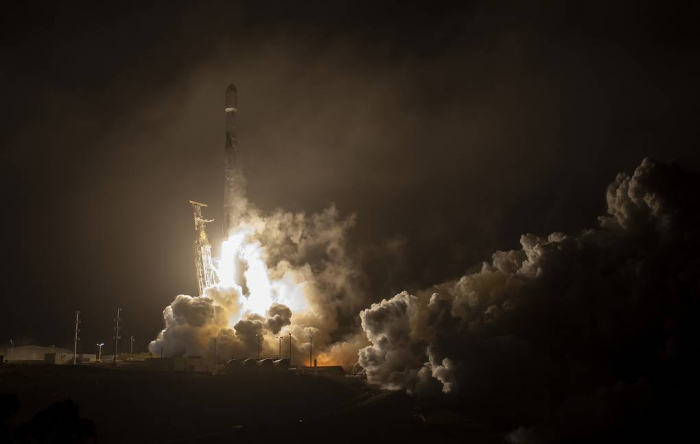A SpaceX Falcon 9 rocket carrying NASA’s Double Asteroid Redirection Test (DART) which is supposed to test this first-of-its-kind planetary defense innovation against potentially dangerous space objects, has been launched in the US. The live coverage is streamed on the website of the National Aeronautics and Space Administration (NASA).
The rocket was launched from Space Launch Complex 4 at Vandenberg Space Force Base in California at 22:21 on Tuesday local time (9:21 Moscow time on November 24).
After reaching outer space, DART will separate from Falcon 9 and travel towards the binary Didymos-Dimorphos asteroid which, much like the Earth, also revolves around the Sun. It is expected that DART will collide with the smaller Dimorphos asteroid at a speed of 24,000 kilometers per hour in the fall of 2022. NASA notes that specialists have a difficult task. "The asteroid we are trying to hit is about the size of a football stadium. And we’re going to try and hit it with something the size of a refrigerator," Director of NASA’s Planetary Science Division Lori Glaze said earlier.
As a result of the collision, Dimorphos’ orbit which revolves around its larger 760-meter-long companion Didymos should change by "a fraction of a percent." Scientists think that this will be enough for them to detect the deviation using ground-based telescopes. The goal of the experiment is to work out a methodology which in the future could help alter the trajectory of potentially dangerous asteroids.
In 2016, NASA created the Planetary Defense Coordination Office (PDCO). Within the program’s framework, it searches for potentially threatening near-Earth asteroids and comets within 48 mln kilometers from the Earth, collects data on their size, orbits and chemical composition, and analyzes the potential consequences of their collision with the Earth.
More about: #NASA
















































